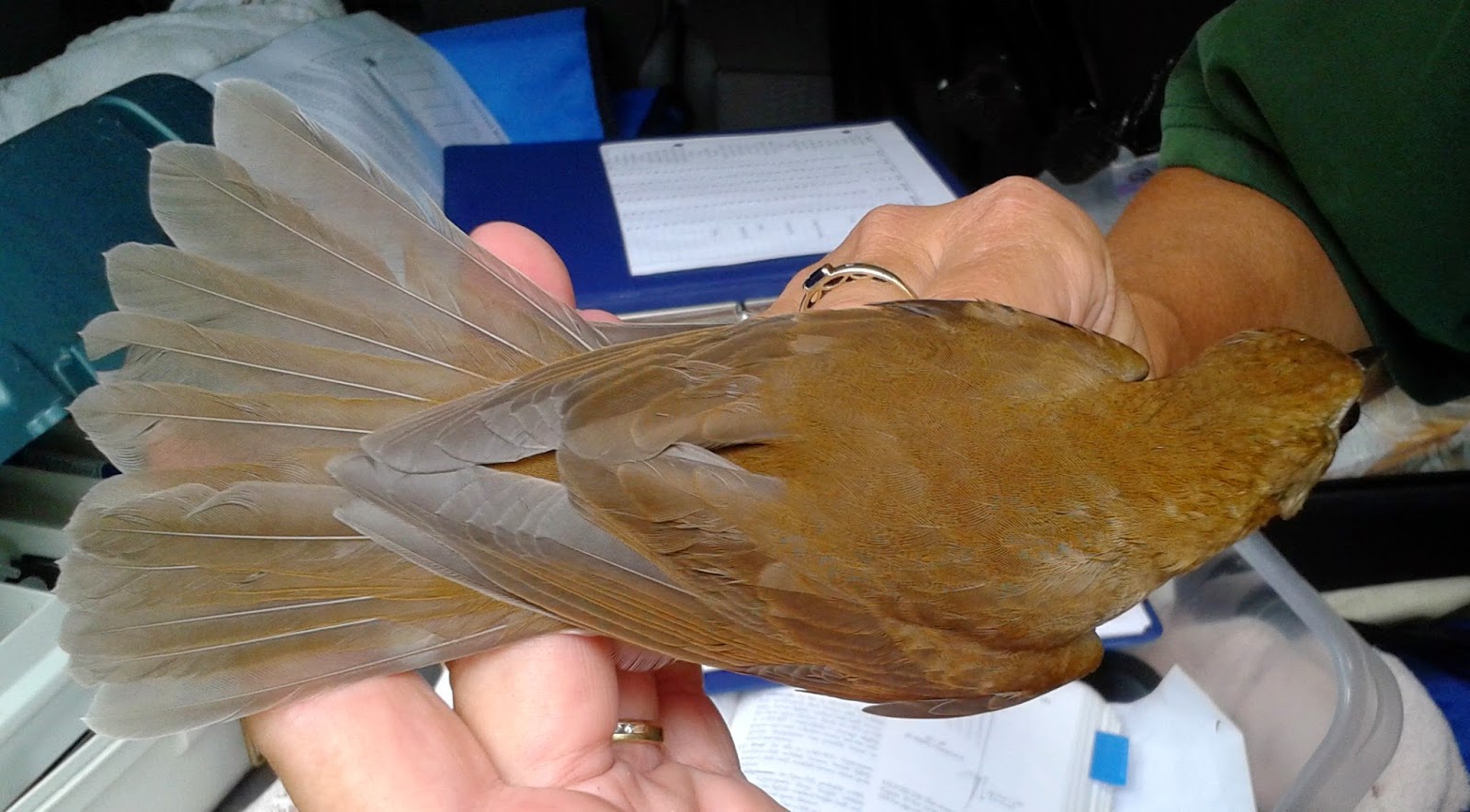We banded on Monday and Tuesday this week. Both days kept us running. We banded 13 on Monday and 9 on Tuesday. Tuesday also had many recaptures due to heavy rain yesterday that likely kept birds from flying on last night. In addition they may have remained just in order to eat to build up more fat stores. Some birds were well stocked while others had virtually no fat on board.
Monday we caught a lot of Ovenbirds (6) and Black-throated Blue Warblers (4). Most of the Ovenbirds were adults. This Black-throated Blue Warbler was born this summer. We tell this by the few white feathers still showing in the black throat.
Black-throated Blue Warbler (male)
Photo by Nancy LaFramboise
Black-throated Blue Warbler (male)
Photo by Nancy Price
Two others were American Redstarts. One loved us so much it was reluctant to leave after weighing! (It was not being held back).
American Redstart
Photo by Nancy LaFramboise
American Redstart
Photo by Nancy LaFramboise
So saving the best for last, we banded our first Chestnut-sided Warbler. This one was a first-year male. This bird is obviously not named for its fall plumage. There was a very small tinge of chestnut on its sides but that may not be quite visible in this photo.
Chestnut-sided Warbler
Photo by Nancy LaFramboise
We also recaptured a Worm-eating Warbler that we banded two weeks ago. At that time it had very little fat; upon recapture it was full and looked ready to move on.
Tuesday brought the return of the Ovenbirds. Of the 6 we banded on Monday we recaptured 4 of them. We recaptured a Northern Cardinal that was banded a few weeks ago. It was born this summer and is almost finished molting in its fresh plumage. You can still see some symmetric molt on the tail and one of the wing feathers growing in (see the gap?).
Northern Cardinal
Photo by Georgia Binderow
We also recaptured a bird from last August. Typically we never see Brown Thrashers on the property. Last year in August I had just said that when one made it into the net. Today we recaptured that bird. Last year the bird was still molting; this time its plumage was quite fresh.
Brown Thrasher
Photo by Nancy LaFramboise
One of the new Ovenbirds from today was born this past summer. We tell this by the lighter tips on some of the wing feathers.
Ovenbird
Photo by Georgia Binderow
We also captured a Worm-eating Warbler today. You might call this revenge of the birds. I'm glad it wasn't the cardinal!!
Worm-eating Warbler (Bander-eating Warbler)
Photo by Georgia Binderow
The next few weeks should also be productive.
Next scheduled session Tuesday, October 7. 2014. Nets open at 6:45. Hope to see you!





.JPG)

.JPG)









.JPG)
.JPG)


.JPG)


.JPG)



.JPG)
